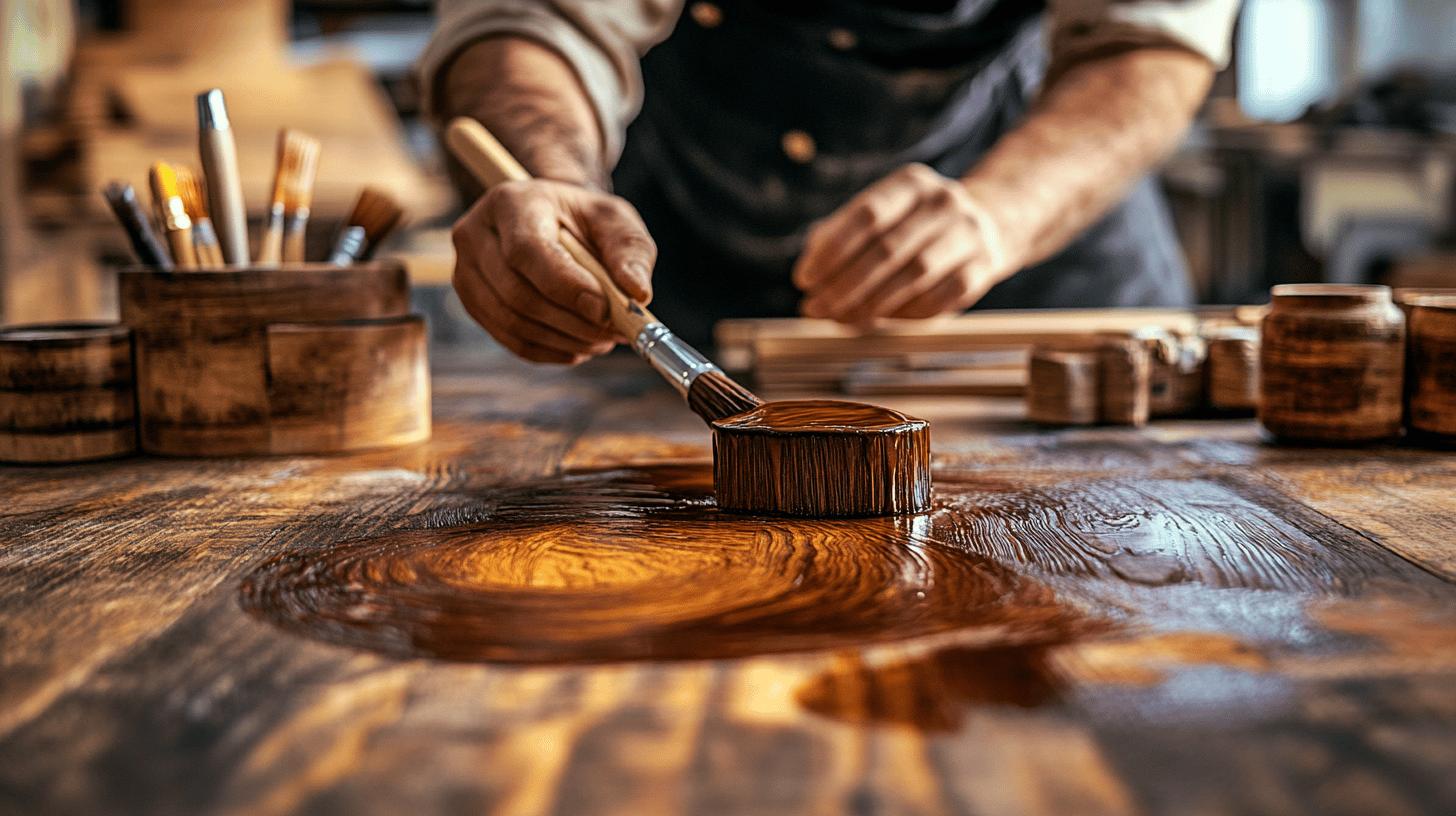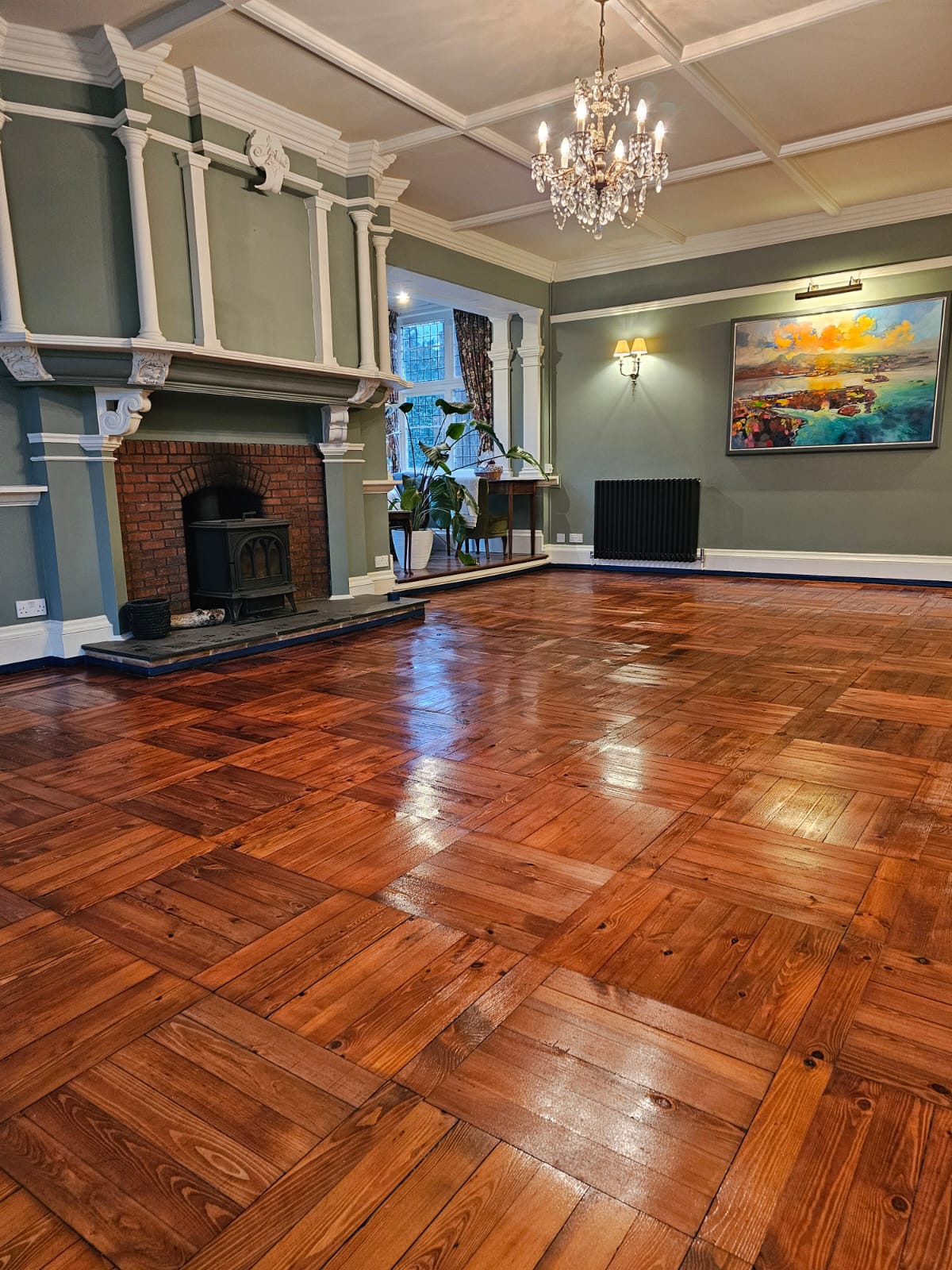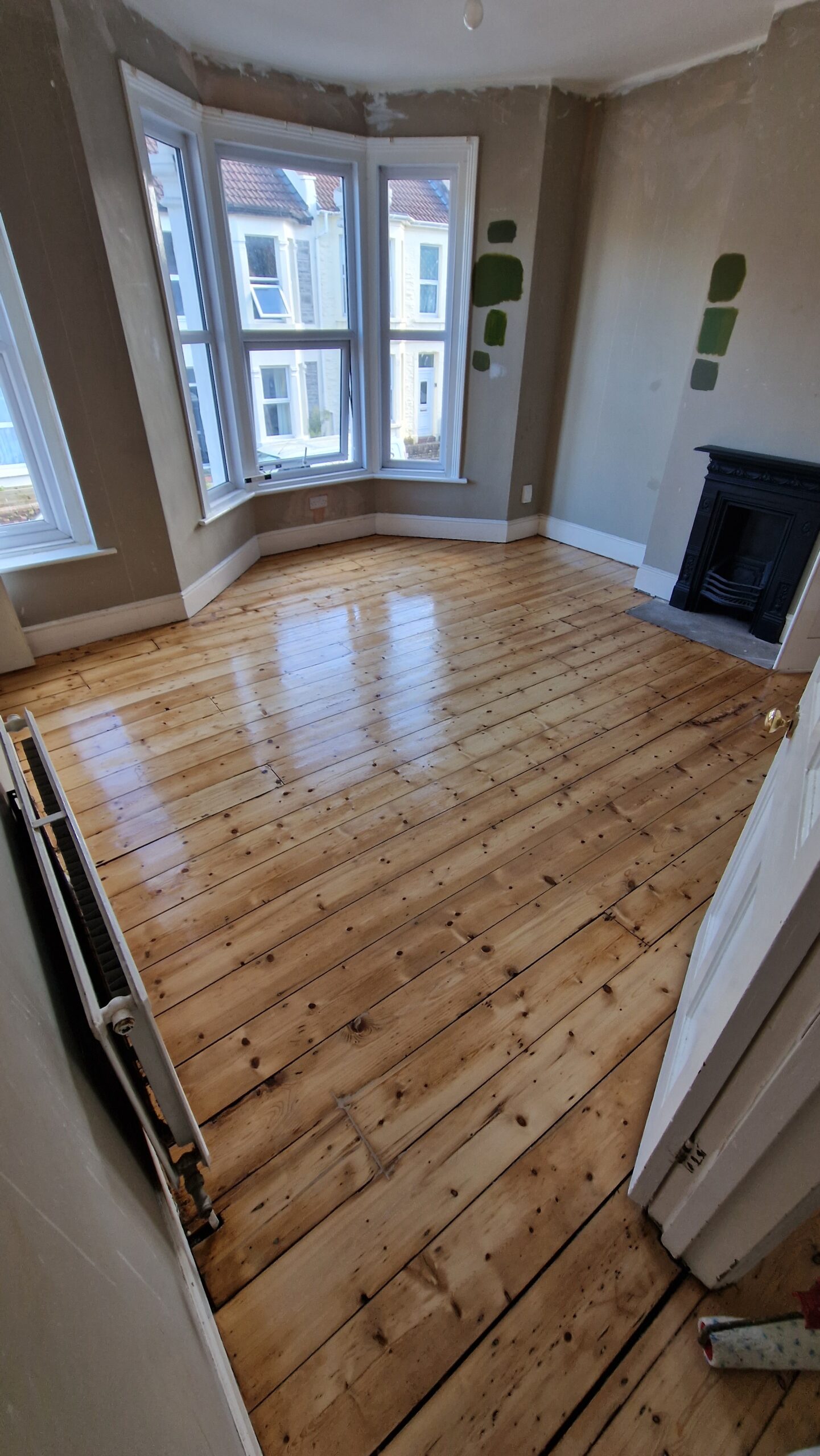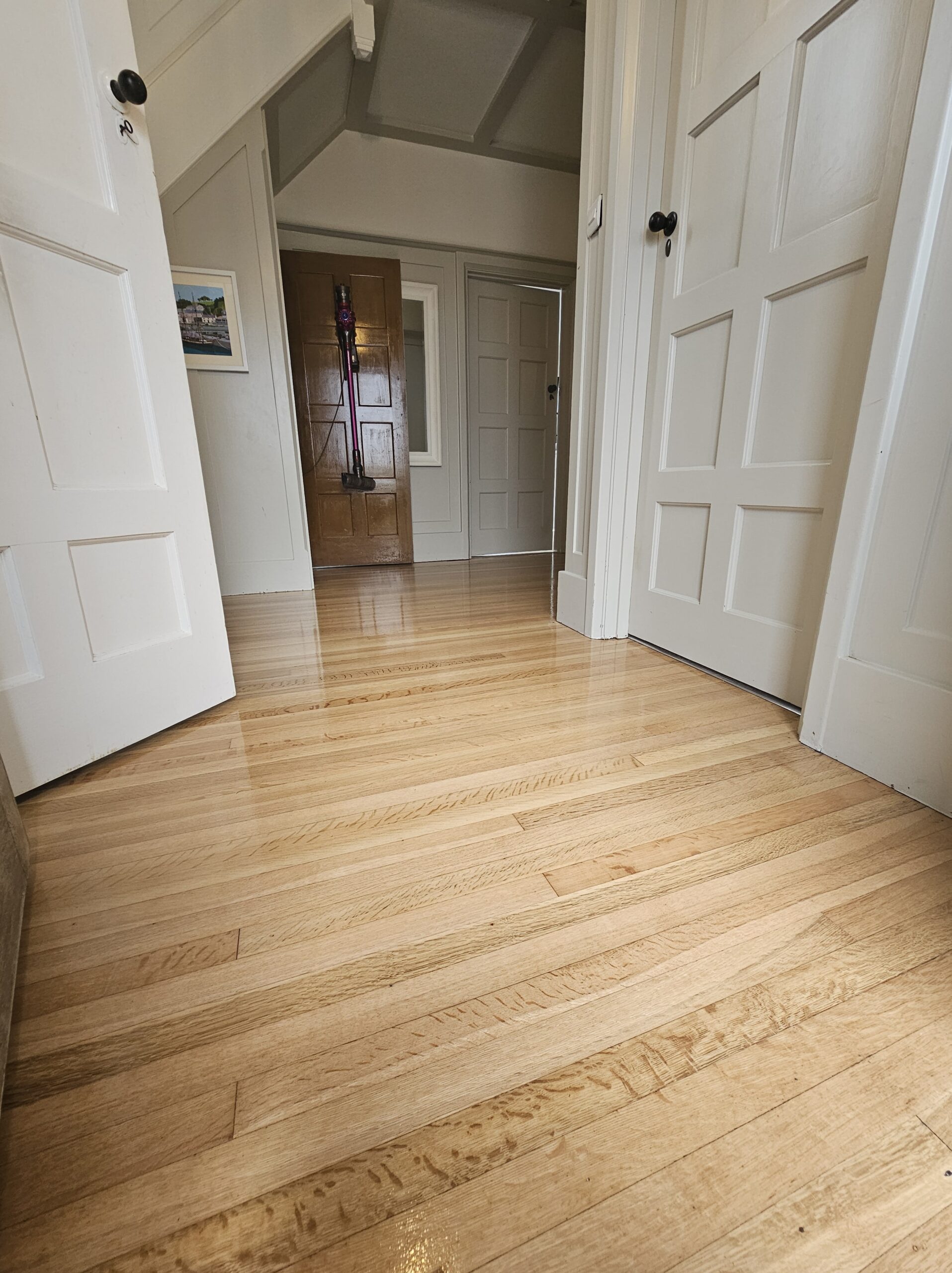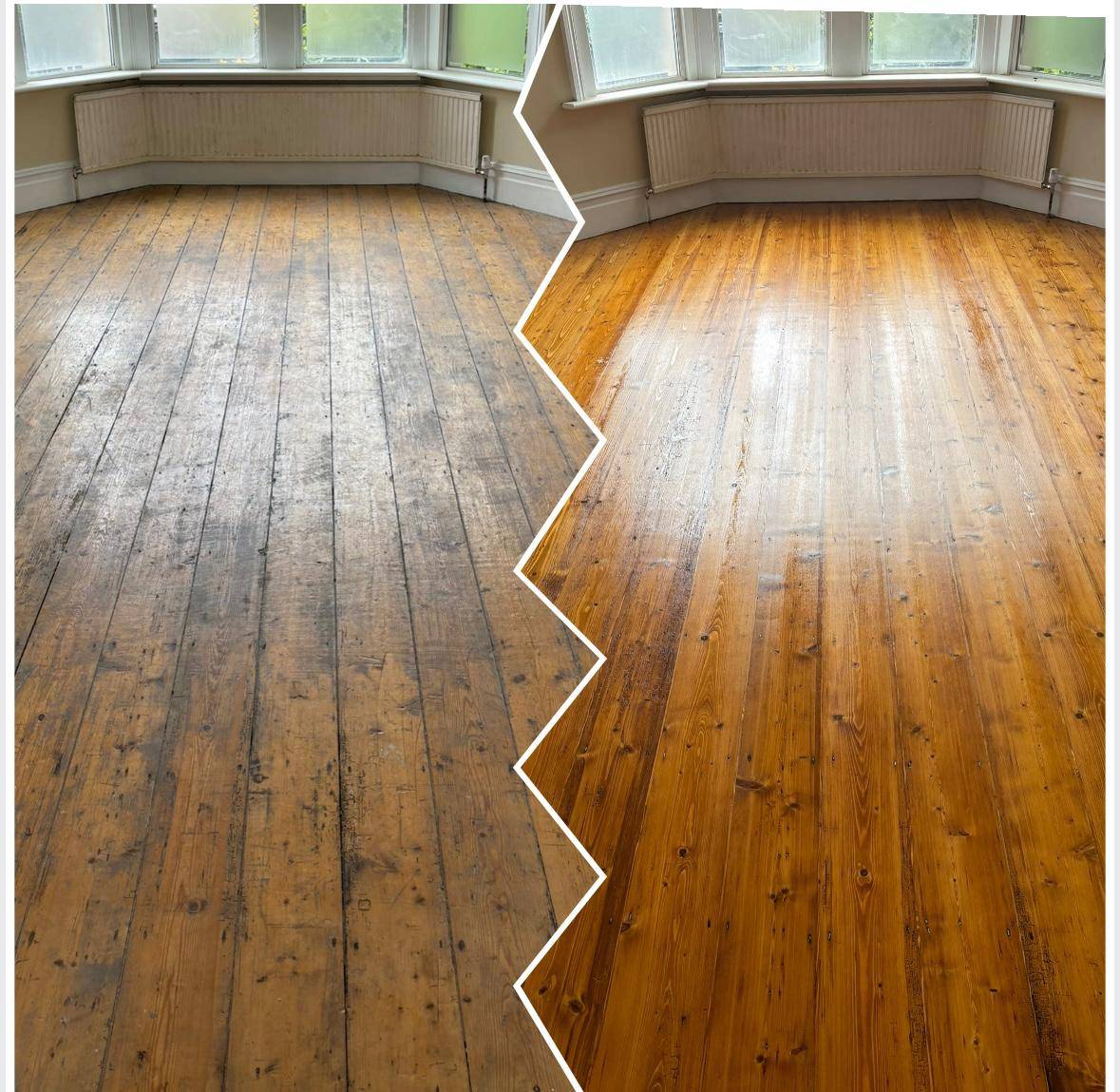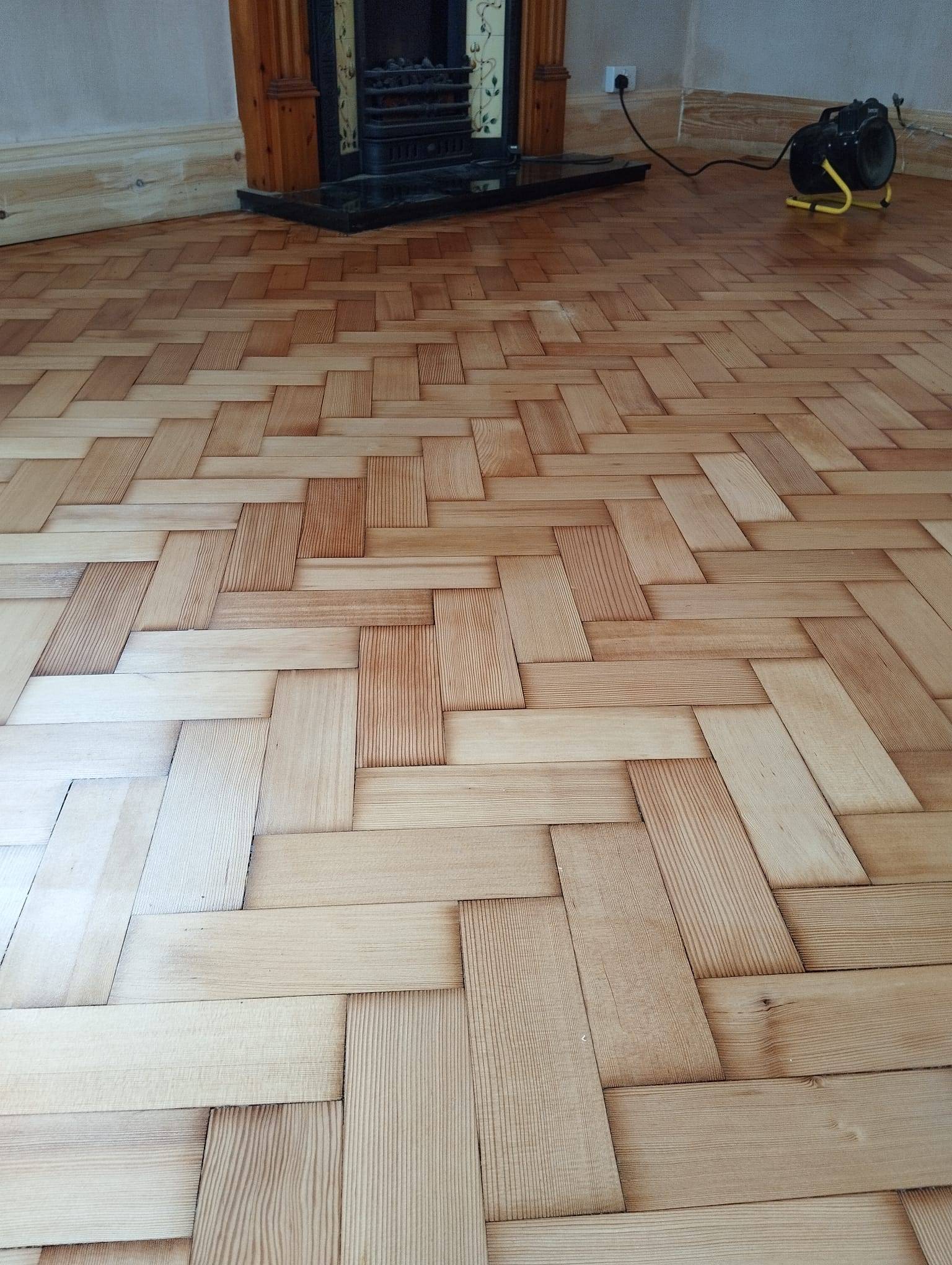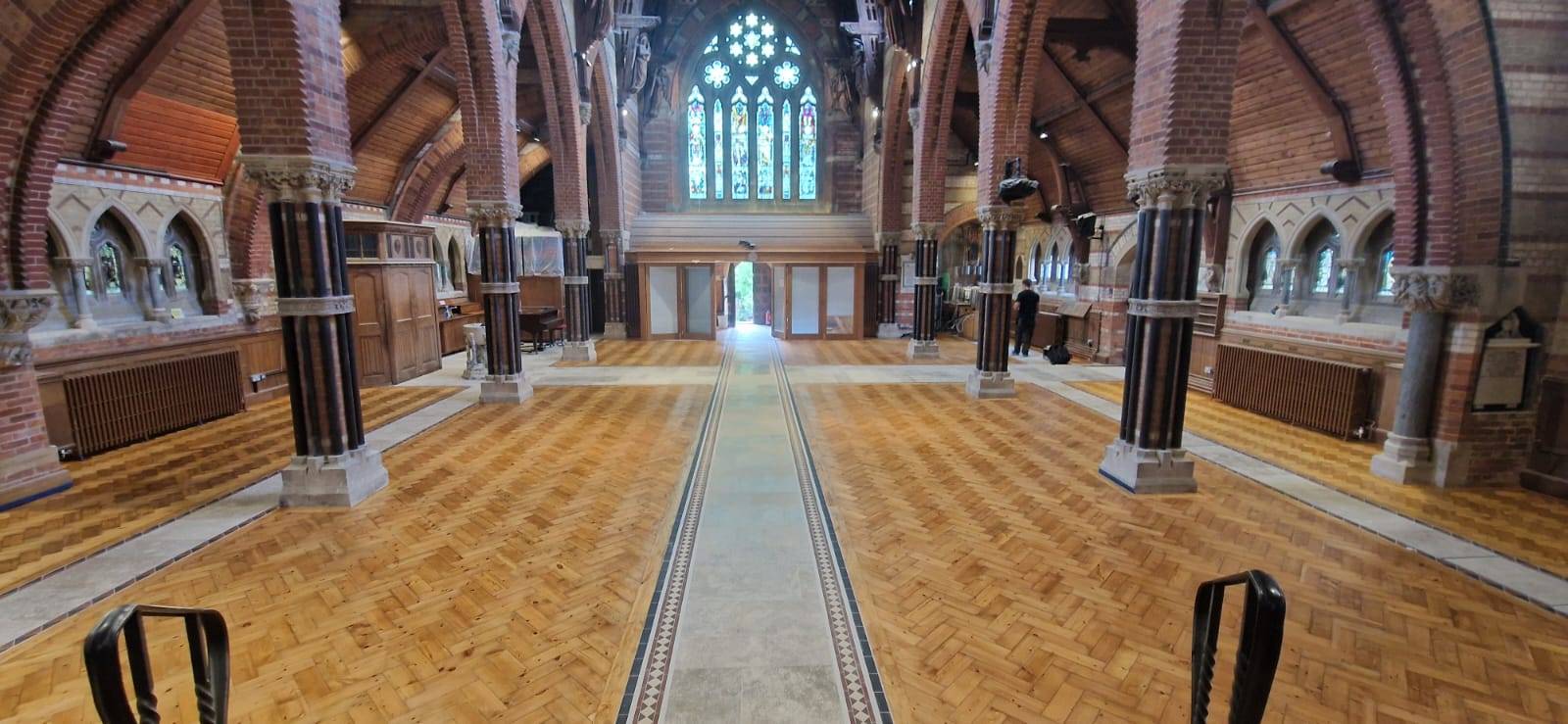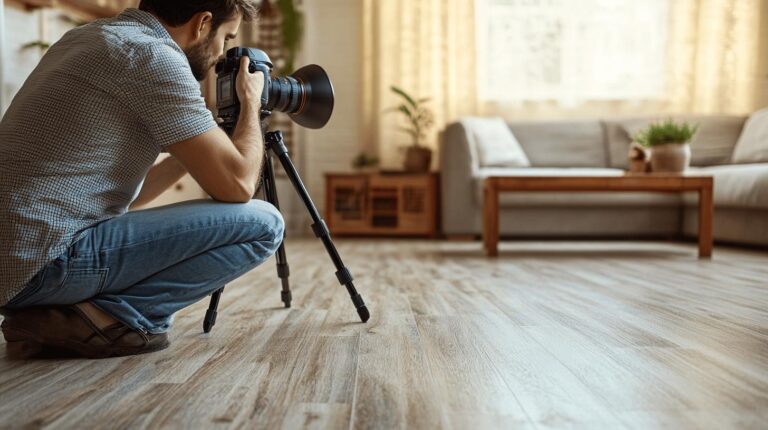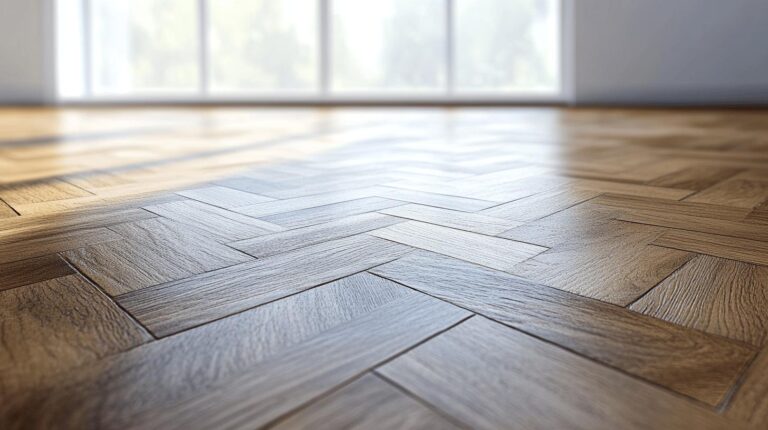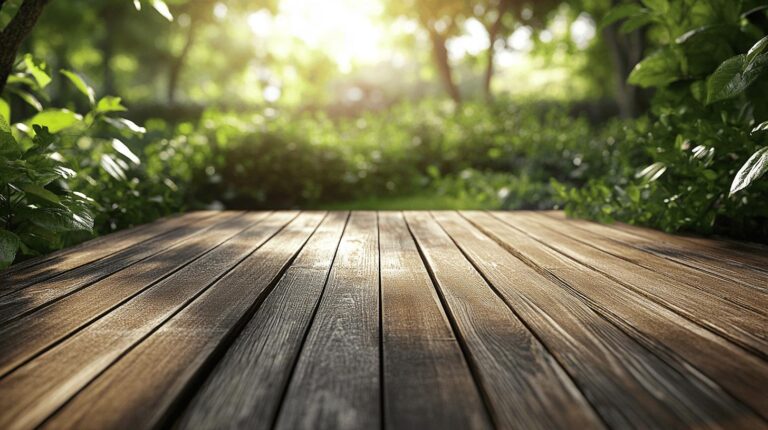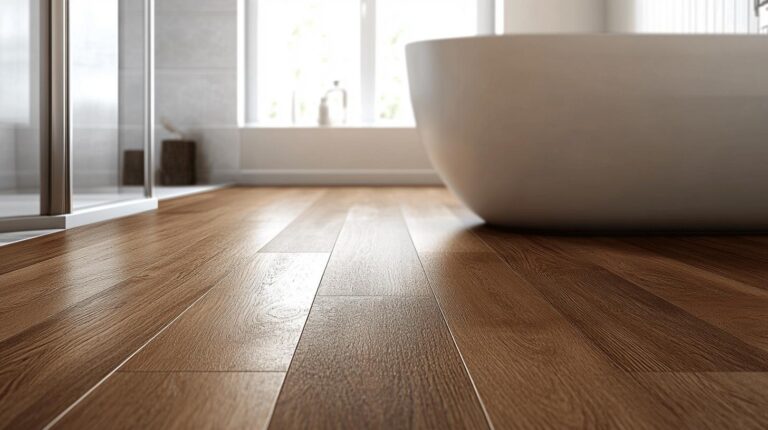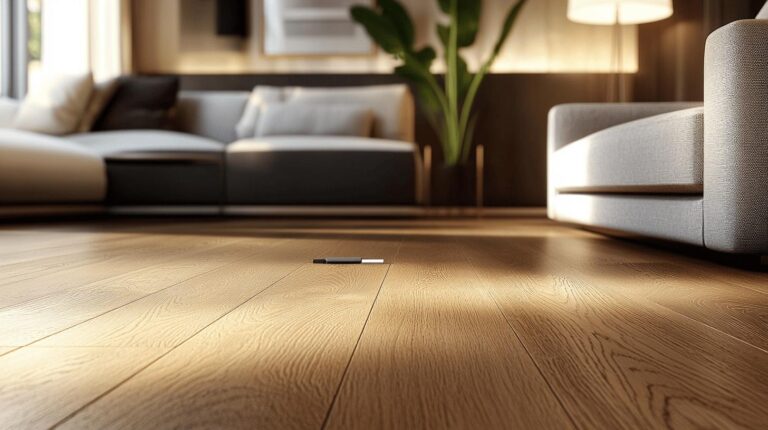Choosing the perfect stain for your wood floors can feel like an art form, where shades and hues are vital in defining space ambience. Like an artist selects their colours to create a masterpiece, choosing the ideal floor stain can transform a room, enhancing aesthetics and value. With countless options ranging from classic warm tones to modern cool shades, how do you decide what’s best for your space? Dive into the world of staining wood floors to uncover techniques and insights that will guide you in finding that immaculate shade that seamlessly complements and elevates your home.
Understanding the Art of Staining Wood Floors
Staining wood floors is a transformative process that significantly enhances wood’s natural grain and texture. The selection of the perfect stain is crucial in accentuating the beauty of the floors, bringing out the unique characteristics of the wood. This enhancement elevates the aesthetic appeal and adds a layer of personality and warmth to any space. By choosing the right stain, homeowners can achieve the desired ambience: the warmth of classic tones, the chic look of modern shades, or the dramatic flair of bold hues. The right stain can also contribute to a property’s perceived value and elegance, making professional staining a worthwhile consideration.
Different stains offer unique benefits, catering to various preferences and functional needs. Oil-based stains are known for their durability and deep penetration, providing a rich, long-lasting colour. However, they require longer drying times and emit more pungent odours during application. On the other hand, water-based stains dry quickly and do not yellow over time, maintaining a consistent appearance. Gel stains sit on the wood, offering a uniform colour ideal for even finishing. Varnish stains add a protective layer that enhances the wood’s resistance to wear and tear. Each type of stain has its advantages, allowing for tailored solutions depending on the desired outcome and environmental considerations.
- Classic warm tones
- Modern cool shades
- Bold dark hues
- Custom stain mixes
- Mid-tone stains
Choosing the Perfect Shade for Your Space
Selecting the perfect shade for your wood floors is a pivotal decision that can dramatically influence a space’s overall aesthetic and ambience. The right stain not only complements the existing décor but also enhances the inherent beauty of the wood. A well-chosen shade can elevate the atmosphere of a room, contributing to a cohesive and inviting environment. Moreover, the stain colour can also impact the perceived value of a property, making it a critical consideration for homeowners looking to enhance their home’s appeal.
Room lighting, interior design, and room size are crucial factors affecting how a stain’s colour appears. Natural and artificial lighting can alter the perception of stain shades, with bright light often making colours appear lighter and more vibrant, while dim lighting can result in a darker, more subdued look. The interior design style, including furniture and wall colours, should harmonize with the floor stain to create a balanced and unified appearance. The size of the room also plays a role; lighter stains can make a small room feel more spacious, while darker hues can add a cosy, intimate feel to larger spaces. Therefore, it is essential to consider these elements when selecting a stain to ensure the floor complements the room’s overall design.
Current stain colour trends reveal a growing popularity for dark-stained floors, which add a sophisticated and modern touch to spaces. These rich, deep shades are particularly favoured for their ability to create a dramatic contrast with lighter furnishings and walls. However, they require more maintenance due to their tendency to show dirt and scratches readily. Meanwhile, there is also a trend towards custom stain mixes, allowing homeowners to tailor colours to their preferences and style. Mid-tone stains are a versatile choice, balancing light and dark shades, making them suitable for various design aesthetics.
Stain Application Techniques: Achieving a Professional Finish
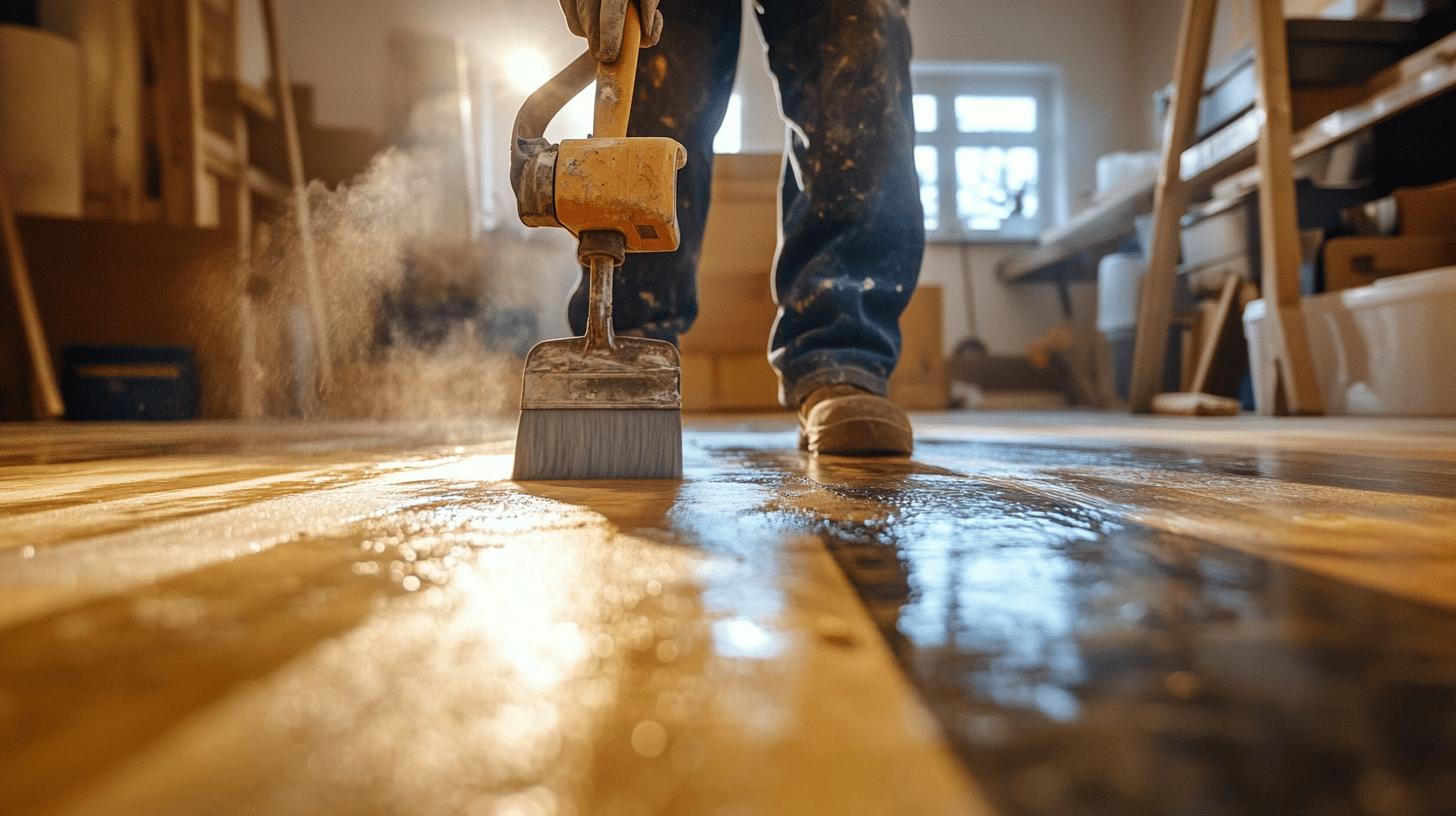
Proper preparation is crucial for successful stain application on wood floors. Before beginning the staining process, removing all furniture and ensuring the area is well-ventilated is essential. This provides ease of movement and prevents any dust or debris from interfering with the stain. Sanding the floors with progressively finer grits is vital to create a smooth surface that absorbs the stain evenly. This step helps in opening the wood’s pores, allowing for better absorption and a uniform finish.
The right tools and materials are indispensable for achieving a professional result. Essential tools include high-quality sandpaper for smoothing surfaces, stain applicators for even distribution, and protective gear to safeguard against fumes and splashes. Ventilation equipment, such as fans, is necessary to maintain air quality during staining. These tools ensure that the application is efficient and the finish is flawless, reducing the likelihood of errors or uneven patches.
The staining process itself involves several key steps. Begin by thoroughly cleaning the sanded surface to remove any dust or particles. Next, apply the stain using a stain applicator, moving toward the wood grain to ensure even coverage. Allow the stain to penetrate the wood for the recommended time before wiping away any excess with a clean cloth. Depending on the desired intensity, multiple coats may be applied. After application, it is crucial to let the stain dry completely before applying a protective finish to seal and enhance the colour.
Advanced techniques such as layering stains or creating patterns can be employed to add visual interest. Layering different stains can add depth and complexity to the floor’s appearance, while pattern creation tools can help achieve unique designs that stand out. These techniques require precision and patience but can transform a simple floor into a stunning focal point.
- Sandpaper
- Stain applicators
- Protective gear
- Ventilation equipment
- Layering techniques
- Pattern creation tools
Maintaining Your Beautifully Stained Wood Floors
Routine maintenance plays a crucial role in preserving the beauty and longevity of stained wood floors. Regular care not only maintains the aesthetic appeal of the stain but also protects the wood from damage. This is especially important for dark stained floors, which tend to show dirt and scratches more noticeably than lighter shades. The finish system applied can significantly affect how easily maintaining the floors is. High-quality finishes offer better protection against everyday wear and tear, reducing the frequency of maintenance needed. By implementing consistent cleaning practices and utilizing protective measures, homeowners can ensure their wood floors remain pristine, enhancing both the look and value of their homes over time.
Different stain finishes require specific maintenance strategies to retain their appearance and durability. Oil-based stains, known for their rich colour penetration, benefit from periodic reapplication of protective finishes to maintain their lustre. Water-based stains, which resist yellowing, require regular cleaning to prevent dullness. Gel and varnish stains, providing a surface-level colour, should be protected from scratches and spills to avoid uneven wear. Employing strategies such as placing rugs in high-traffic areas and using felt pads on furniture can help minimize potential damage. Prompt attention to spills and routine sweeping and mopping are essential to prevent stains and dirt buildup, ensuring that the floors continue to impress with their beauty and elegance.
- Regular sweeping and mopping
- Use of rugs in high-traffic areas
- Felt pads on furniture
- Prompt spill cleanup
- Periodic reapplication of protective finishes
Expert Recommendations for Selecting and Applying Stains
Engaging professional staining services like Ryan’s Restoration can ensure an impeccable finish for your wood floors. Professionals bring expertise, precision, and access to high-quality materials essential for achieving consistent and long-lasting results. They understand the intricacies of wood characteristics and stain interactions, ensuring that the selected shade enhances the natural beauty of the floors. With their experience, professionals can also provide valuable advice on stain selection, helping homeowners choose colours that complement their space while considering factors such as lighting and decor. Furthermore, a professional service guarantees a smooth application process, minimizing the risk of errors and ensuring the finish is beautiful and durable.
Common pitfalls in DIY staining often stem from inadequate preparation and uneven application. To avoid these issues, it is crucial to thoroughly sand and clean the floors before applying any stain, as leftover dust can cause blemishes in the finish. Uneven application often results from inadequate tools or improper techniques, leading to blotchy or streaky appearances. Adhering to recommended drying times is vital to prevent smudging and ensure the stain sets correctly. High-quality stains and tools can dramatically improve the outcome, providing a more professional-looking finish.
- Thorough floor preparation
- Even stain application
- Correct drying times
- Use of high-quality stains and tools
Final Words
As emphasised in the exploration of staining wood floors, staining transforms both the appearance and durability of a home’s flooring. Understanding the importance of stain selection, considering factors like lighting and design, and knowing the right application techniques are crucial. One can achieve a professional finish by implementing routine maintenance and relying on expert services like Ryan’s Restoration. Staining wood floors involves finding the perfect shade, enhancing the beauty and value of any space, and making every step worthwhile.
FAQ
Q: What are the different wood floor stains and their unique benefits?
A: There are oil-based, water-based, gel stains, and varnish stains. Oil-based stains offer deep penetration, water-based stains dry quickly, gel stains provide even colour, and varnish stains add durability and gloss.
Q: How does choosing the right stain colour benefit your wood floors?
A: Selecting the right stain enhances the wood grain and texture while complementing the room’s aesthetic, improving the overall look and longevity of the floors, and potentially increasing home value.
Q: What popular stain colours should be considered for wood floors?
A: For a variety of aesthetic options to enhance your space, consider classic warm tones, modern cool shades, bold dark hues, custom stain mixes, and mid-tone stains.
Q: How do lighting, interior design, and room size affect stain selection?
A: Lighting can alter stain appearance, interior design should harmonise with the floor colour, and light or dark stains can visually modify room size for the desired spatial effect.
Q: What are the essential tools and materials for staining wood floors?
A: Essential tools for advanced finishing include sandpaper, stain applicators, protective gear, ventilation equipment, layering techniques, and pattern-creation tools.
Q: What steps are involved in the wood floor staining process?
A: Prepare by removing furniture and sanding floors. Apply the stain evenly with an applicator and allow for adequate drying time. Advanced techniques may include layering and pattern creation.
Q: What maintenance practices are recommended for stained wood floors?
A: Regular sweeping and mopping, rugs in high-traffic areas, fitting felt pads on furniture, prompt spill cleanup, and periodic reapplication of protective finishes ensure durability.
Q: What professional services are recommended for staining wood floors?
A: Hiring professionals like Ryan’s Restoration ensures a high-quality finish and can prevent common DIY mistakes, such as improper preparation and uneven application.
Q: What common mistakes in DIY floor staining, and how can they be avoided?
A: Common mistakes include inadequate preparation, uneven stain application, and improper drying times. Avoid these by thorough preparation, ensuring even application, and following recommended guidelines.
Q: What are the best practices for successful wood floor staining?
A: For successful staining, thoroughly prepare floors, apply stains evenly, adhere to drying times, and use high-quality stains and tools to achieve a professional finish.
